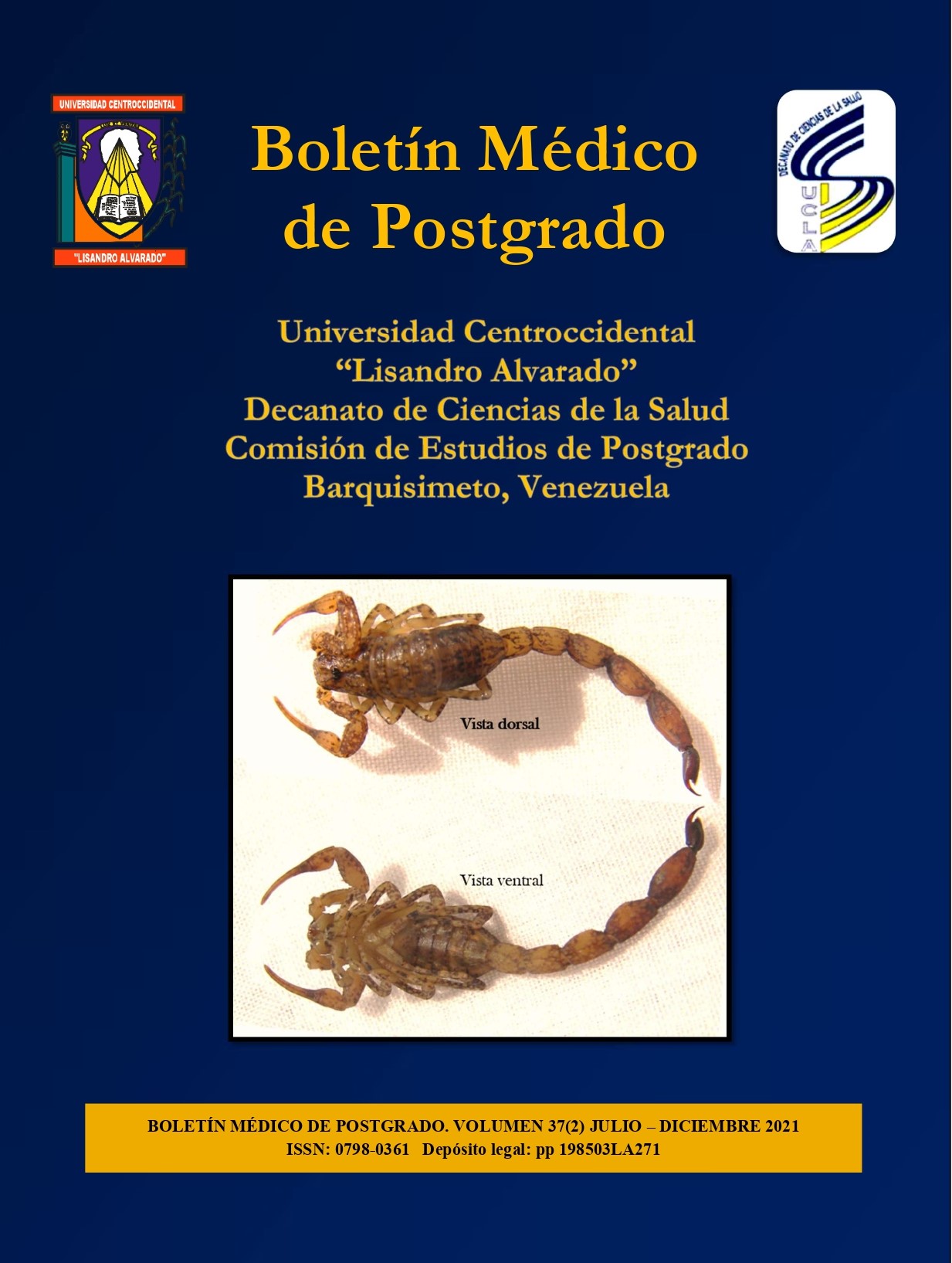Compliance of the application of the advanced vital support protocol in trauma patients Hospital Central Universitario Dr. Antonio María Pineda
Keywords:
multiple trauma, emergency medical services, prehospital care, hospital care, emergenciesAbstract
This study was performed to determine compliance of the application of the Advanced Trauma Vital Support Attention Protocol (ATLS) in polytrauma patients admitted to the Hospital Central Universitario Dr. Antonio María Pineda during the August-November 2019 period. In regards to the pre-hospital care, the majority of patients did not receive attention at the scene (95.3%), the time between the event and the initial attention was 15-60 minutes (68.7%), most of them were transferred in private vehicles (95.3%), without prior call to the hospital (99.6%) and due to lack of availability, first aid was not performed. The patients arrived less than an hour after the accident (65.7%), received immediate care (84.3%), the staff did not expect them (99.67%), did not have a multidisciplinary team (98.6%) nor a leader (96%), were received in most cases by first-year surgery residents (61.4% and 51.1%). There was availability of laryngoscope (97.6%) and orotracheal tube (62.9%), peripheral venous catheterization was performed (100%) and crystalloid solutions were administered (98.6%). In the primary review, with respect to the airway with cervical spine control, three parameters were fulfilled, in regards to the breathing and ventilation two parameters, circulation with bleeding control three parameters and neurological deficit one parameter. The complementary tests done were chest radiography (97%) and pelvis (88%). For the parameters of the secondary review, the staff diagnosed the type of injury (99.3%), four thorax parameters and three abdomen parameters were fulfilled; the rest of the parameters were not met. In the tertiary review, inadvertent limb injuries were identified (66.11%) and 5.65% of deaths were recorded.
Downloads
References
Organización Mundial de la Salud. (2017). Situación de Salud en las Américas: Indicadores Básicos 2017. Disponible en: www.paho.org/.../831-situacion-de-salud-en-las-americas-indicadores-basicos-2017. (Consulta: 2019, Mayo 09).
Organización Panamericana de la Salud. (2018). Indicadores Básicos. Situación de Salud en las Américas. PAHO: Washington, D.C.; 2018. Disponible en: http://iris.paho.org/xmlui/handle/123456789/49511 (Consulta: 2019, Mayo 10).
Ministerio del Poder Popular para la Salud. (2018). Anuario de Mortalidad 2014. Viceministerio de Redes de Salud Colectiva, Dirección General de Epidemiología y Dirección de Información y Estadísticas en Salud. Disponible en: https://www.ovsalud.org/descargas/publicaciones/documentos-oficiales/Anuario-Mortalidad-2014.pdf (Consulta: 2019, Mayo 10).
Escalona J, Castillo R, Pérez J, Rodríguez Z. Algunas consideraciones en torno a la atención del paciente politraumatizado. Rev Cubana de Medicina Militar 2017; 46(2): 15-20.
Espinoza J. Atención básica y avanzada del politraumatizado. Acta Med Per 2011; 28(2):105-111.
Jiménez J, Pérez J, Navarro R, Gómez M, Monsalve J, Peyró R. Reanimación de control de daños en el paciente adulto con trauma grave. Rev Española Anestesiol Reanim 2012; 59(1): 31-42.
Published
How to Cite
Issue
Section

This work is licensed under a Creative Commons Attribution-NonCommercial-ShareAlike 4.0 International License.
Las opiniones expresadas por los autores no necesariamente reflejan la postura del editor de la publicación ni de la UCLA. Se autoriza la reproducción total o parcial de los textos aquí publicados, siempre y cuando se cite la fuente completa y la dirección electrónica de esta revista. Los autores(as) tienen el derecho de utilizar sus artículos para cualquier propósito siempre y cuando se realice sin fines de lucro. Los autores(as) pueden publicar en internet o cualquier otro medio la versión final aprobada de su trabajo, luego que esta ha sido publicada en esta revista.



